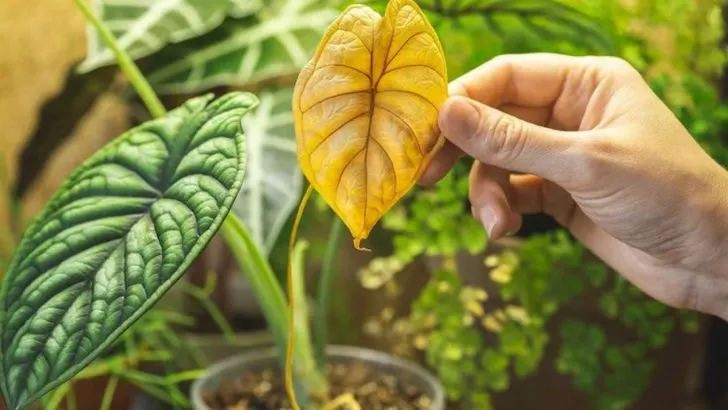As plant enthusiasts, we often speak about the bond between a gardener and their plants, but did you know that your plants are constantly communicating with you? They have subtle ways of signaling when something isn’t quite right, and learning to read these signs can be the key to saving your plant before it’s too late. Whether it’s wilting leaves, discolored spots, or a sudden lack of growth, plants provide us with visual cues to indicate their needs.
In this article, we’ll explore 13 signs your plant might be trying to tell you something important. By recognizing these warning signals early on, you can take quick action to correct the issue and ensure your plants continue to thrive. So, before you start to panic over your plant’s health, take a moment to observe its behavior and decode the messages it’s sending you.
Yellowing Leaves
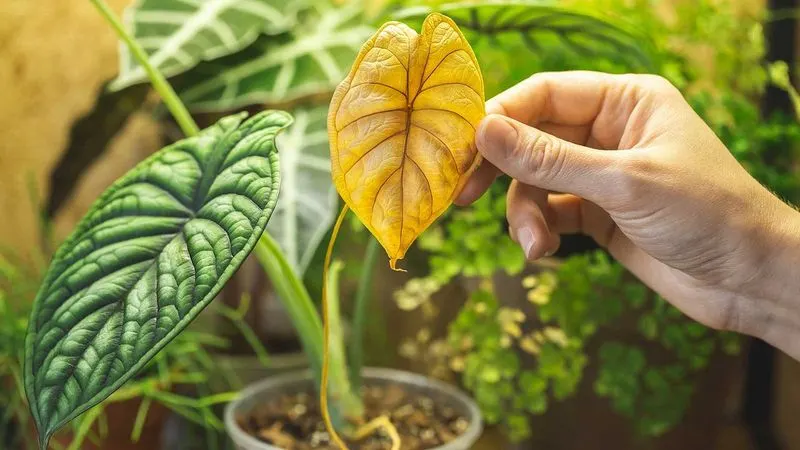
Yellow leaves can indicate several issues, but the most common are overwatering or nutrient deficiencies. When leaves turn yellow, it might be your plant’s way of saying it’s getting too much water, or not enough nitrogen. This can also happen when the plant is stressed by environmental changes.
Consider checking the soil’s moisture level and ensuring proper drainage. A soil test might help identify if there’s a nutrient imbalance. Adjust watering schedules and consider fertilizing to address the discoloration. Catching yellowing early can save your plant from further distress.
Wilting Leaves
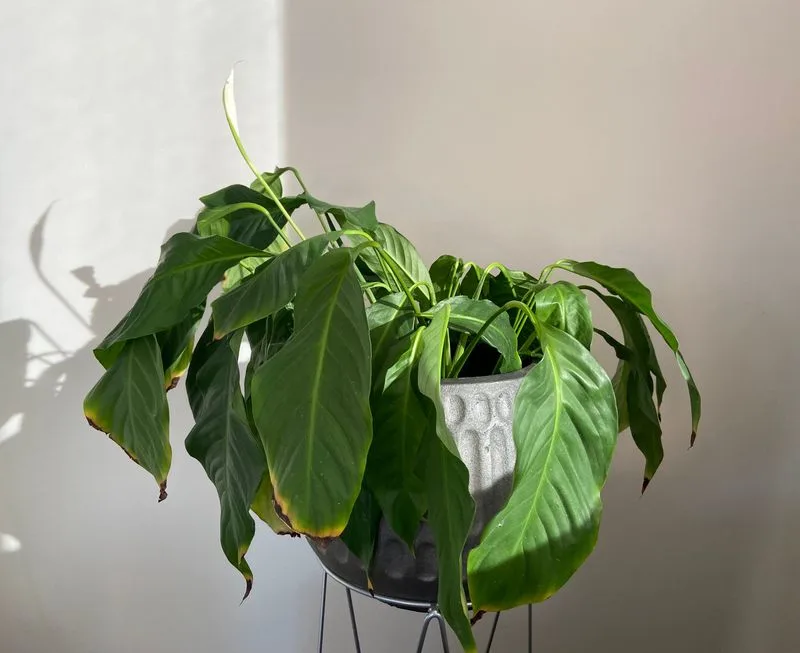
Wilting is often a silent scream for water, but it could also be due to overwatering. When a plant is wilting, the soil may be dry, indicating thirst. Conversely, root rot from excessive moisture can mimic this sign.
To diagnose, check the soil’s moisture by sticking a finger an inch deep into the soil. If dry, it’s time to water. Ensure the pot has good drainage to prevent water from accumulating. Watching your plant’s watering needs closely can prevent wilting from becoming a regular occurrence.
Brown Leaf Tips

Brown tips on leaves are often a cry for more humidity or a sign of too much salt in the soil. This could be due to over-fertilizing or using hard water. In homes with low humidity, certain plants may struggle to retain moisture, leading to browning.
Try misting your plant regularly or using a humidity tray. Reducing the amount of fertilizer or switching to distilled water can also help mitigate salt buildup. Addressing these factors can bring the lush green back to your plant’s leaves.
Dropping Leaves

Leaf drop can be a normal seasonal change or a sign of stress from environmental factors like temperature fluctuations. When your plant sheds more leaves than usual, it might be reacting to sudden changes in its environment, such as drafts or relocation.
Monitor the room temperature and ensure the plant is not exposed to cold drafts. Gradual acclimatization to new locations can help reduce leaf drop. Keeping a steady environment is key to preventing this symptom from escalating.
Pests Visible
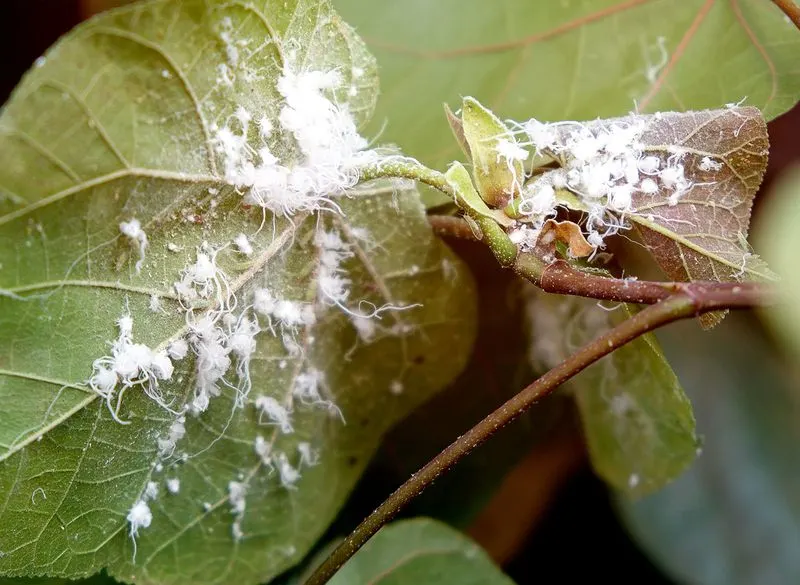
Seeing pests on your plant is a clear indicator it’s under attack. Aphids, spider mites, and other insects feed on leaves, weakening the plant. They often appear in clusters, especially on new growth or the undersides of leaves.
Regularly inspect your plants, especially if they are outdoors or near open windows. Use insecticidal soap or neem oil to manage infestations. Keeping plants clean and monitoring for early signs of pests can help maintain a healthy plant environment.
Discolored Leaves
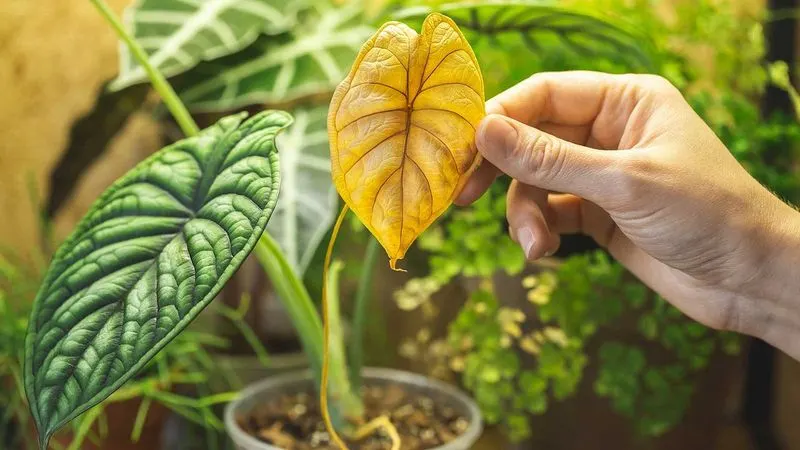
Leaves with random spots or blotches might signal fungal or bacterial infections. These discolorations can vary in color, including white, brown, or black, depending on the pathogen.
Ensure good air circulation around the plant and avoid getting water on the leaves. Pruning affected leaves and using fungicidal sprays can help manage the issue. Identifying and treating the problem early can prevent the infection from spreading to healthy foliage.
Leggy Growth
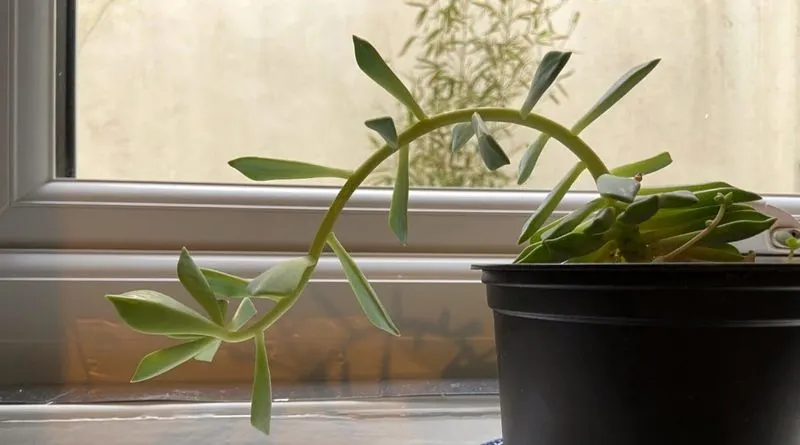
Leggy plants are often reaching for light, indicating they are not getting enough sunlight. This results in elongated stems with sparse foliage, as the plant stretches towards the nearest light source.
Consider moving your plant to a sunnier location or supplementing with grow lights. Regularly rotating the plant can also promote even growth. By adjusting light exposure, you can encourage a fuller, more balanced plant appearance.
Mold on Soil
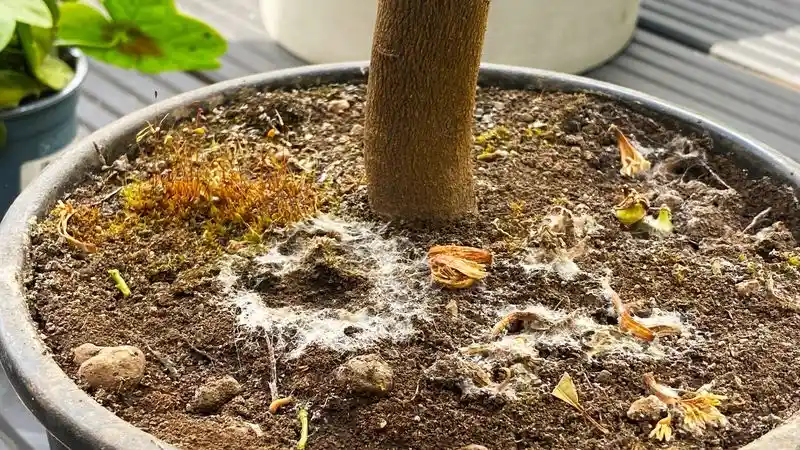
White mold on the soil surface might indicate overwatering and poor air circulation. This harmless fungus thrives in damp conditions and can compete with your plant for nutrients.
Improve air circulation and reduce watering frequency to combat mold. Removing the top layer of moldy soil and replacing it with fresh soil can also help. Keeping the soil surface clean and dry is crucial for preventing mold from taking hold.
Stunted Growth
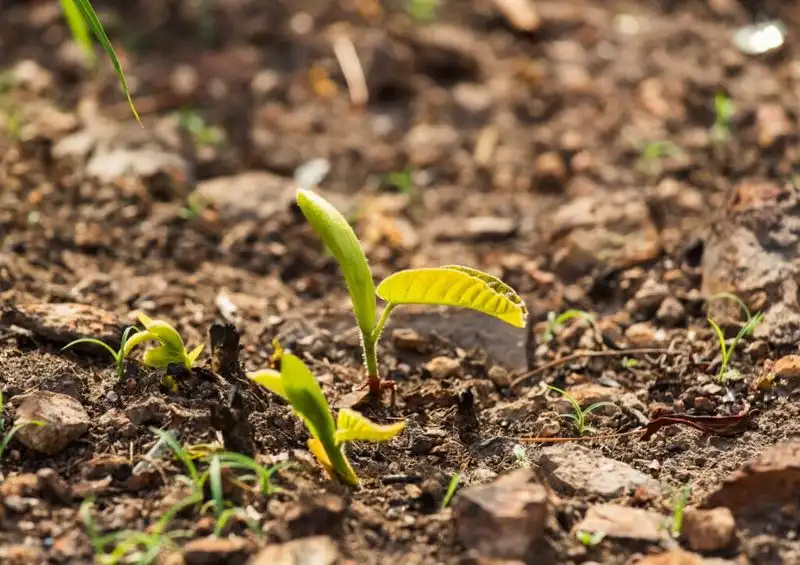
Plants that stop growing as expected could be facing root problems or nutrient deficiencies. Stunted growth might mean the plant is struggling to absorb essential nutrients due to compacted roots or poor soil quality.
Repotting with fresh soil or aerating the current soil can help. Fertilizing with a balanced nutrient mix supports new growth. Understanding and addressing the underlying causes of stunted growth ensures your plant reaches its full potential.
Curling Leaves
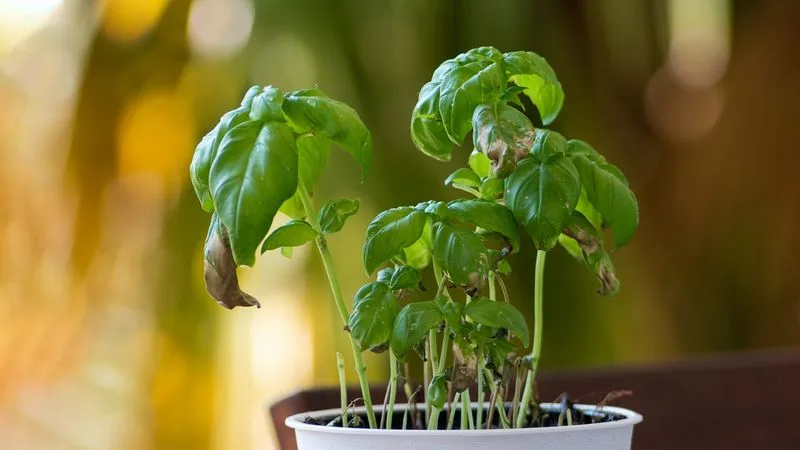
Curling leaves can be perplexing, often indicating pest infestations or environmental stress. This curling can be a defense mechanism against pests like aphids or a response to extreme temperatures.
Inspect for pests and treat with organic solutions if necessary. Adjusting environmental conditions like temperature and humidity can help alleviate stress. Addressing curling leaves promptly prevents further damage and supports plant recovery.
Sticky Residue

Sticky residue on plant leaves often signals the presence of sap-sucking insects like scale or mealybugs. This residue, known as honeydew, can attract mold and ants, further complicating plant health.
Wipe leaves gently and treat pests with insecticidal soap. Regular cleaning and monitoring can prevent infestations from escalating. Maintaining plant cleanliness discourages pest attraction and keeps your plant thriving.
Root Rot Signs
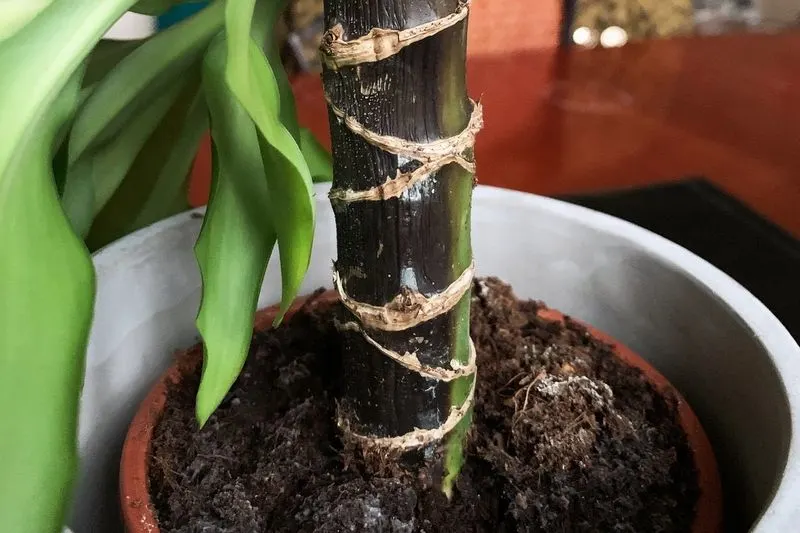
Root rot is a silent killer, usually caused by overwatering. It manifests as blackened, mushy roots that can no longer support the plant. Yellowing leaves and stunted growth can precede visible root damage.
Check for proper drainage and reduce watering if signs appear. Repotting in fresh soil can save the plant if caught early. Understanding watering needs and ensuring proper drainage are key to avoiding root rot.
Sunburn Spots
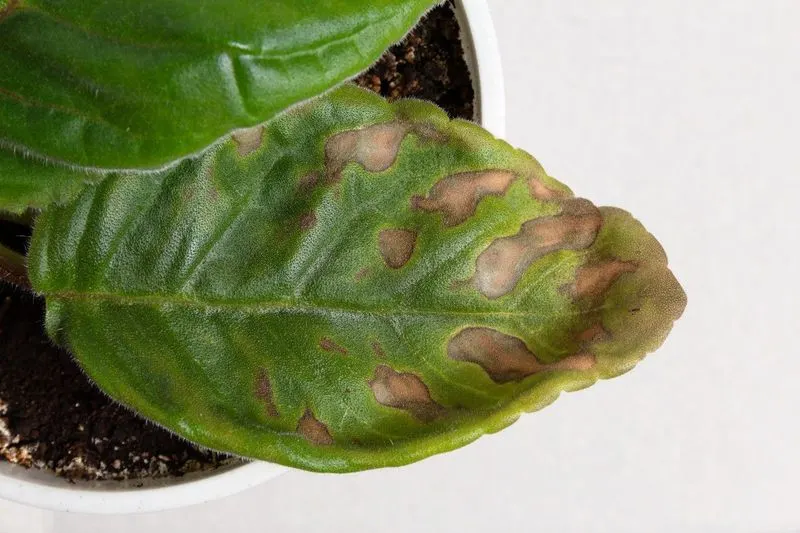
Sunburned leaves often have brown, crispy patches and are a sign the plant is getting too much direct sunlight. Even sun-loving plants can suffer if not acclimated to intense light conditions.
Provide some shade during peak sunlight hours or move to a location with filtered light. Gradually introduce sun exposure to prevent future burns. Balancing light exposure protects against sunburn while promoting healthy growth.

